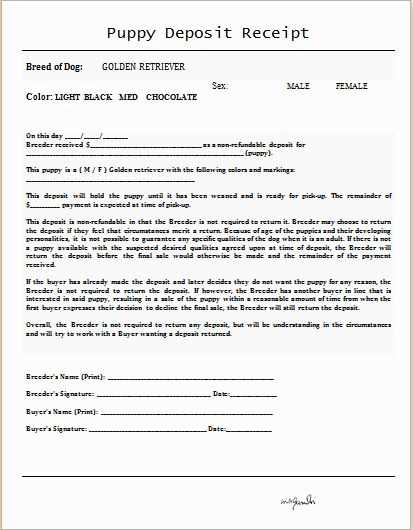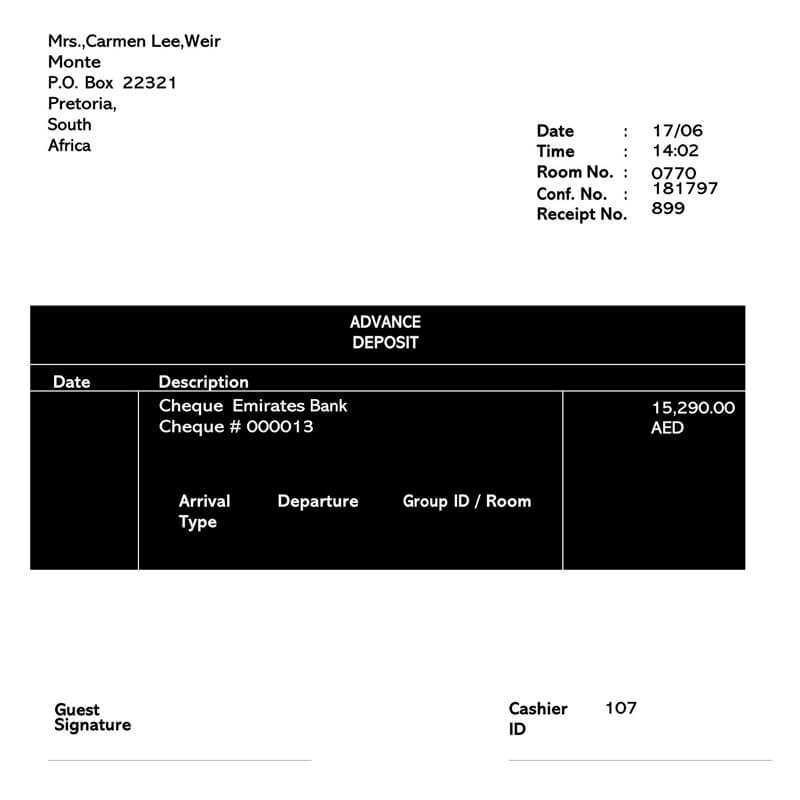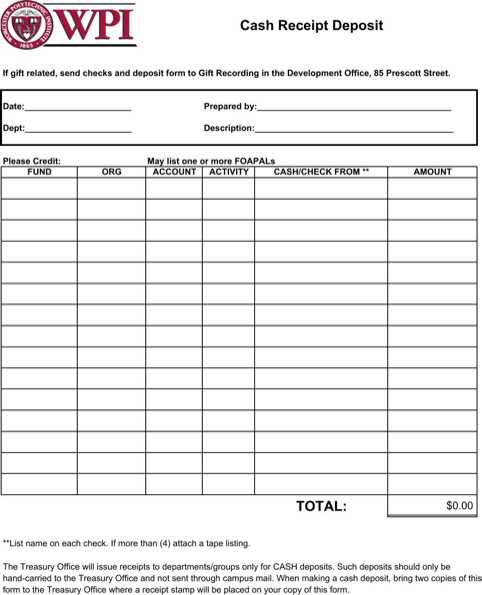
When starting landscaping work, a deposit receipt is a key document to formalize the agreement between you and your client. This receipt serves as proof of the payment made in advance, and it’s important to keep it clear, precise, and professionally formatted.
The deposit receipt should include key information such as the amount paid, the scope of work, and a timeline for the services to be rendered. Be sure to specify the details of the landscaping project, including any specific tasks, materials, or equipment involved. The more detail you provide, the less room there is for misunderstandings.
Clear Terms and Payment Information should always be a priority. Include the full name of the client, the business name (if applicable), and any contact information. Also, note the total amount due for the full project and the amount of the deposit. It’s useful to mention whether the deposit is refundable or non-refundable, especially for larger projects.
Including an estimated start and completion date can help establish expectations from the beginning. If the project timeline changes, it’s important to communicate updates to avoid confusion. Lastly, having both parties sign and date the deposit receipt ensures that all terms are agreed upon and acknowledged, minimizing potential disputes down the road.
Deposit Receipt Template for Landscaping Work to Be Done
A deposit receipt for landscaping services serves as a written acknowledgment of a client’s payment for work that is yet to be completed. When creating a template, be sure to include the following details:
1. Company and Client Information
List the full name and contact information for both the landscaping service provider and the client. This ensures clear identification of the parties involved.
2. Receipt Date
Clearly state the date when the deposit was received. This helps track the payment timeline and avoid confusion about payment dates.
3. Deposit Amount
Include the exact amount of the deposit paid. Specify the currency to avoid misunderstandings, particularly if dealing with international clients.
4. Total Estimated Cost
Provide an estimate of the total cost for the landscaping work to be done. This gives both parties a clear understanding of the scope and pricing involved.
5. Remaining Balance
Indicate the remaining balance after the deposit has been paid. Include the due date for the remaining payment to prevent any delays in project completion.
6. Project Details
Describe the type of landscaping work to be completed, such as garden design, turf installation, tree planting, or irrigation system setup. Be specific to avoid any ambiguity about the services being provided.
7. Terms and Conditions
Outline any terms or conditions relevant to the deposit and the overall service agreement, such as refund policies, deadlines, or any other obligations agreed upon.
8. Signature Lines
Provide spaces for both the service provider and the client to sign, confirming the receipt of the deposit and their agreement to the terms listed in the document.
This template serves as a formal, legally binding acknowledgment of the deposit payment and provides clarity for both parties regarding the project scope and payment structure.
Creating a Clear Payment Schedule for Landscaping Services

Set clear and defined payment milestones before starting any landscaping project. This helps both you and your client understand expectations and avoid misunderstandings. Break down the payment structure into specific phases, such as design, materials purchase, and final installation. For example, you can require a deposit to cover the initial consultation and design work, then request further payments after the delivery of materials or after each major phase is completed.
Outline Payment Dates

Clearly indicate the due dates for each payment. This should align with key stages of the project, such as the completion of the design, acquisition of materials, or a certain percentage of work completed. Having specific dates tied to deliverables ensures both parties know when to expect and make payments, and prevents delays in project execution.
Define Payment Methods
Specify the types of payment you accept, whether it’s checks, bank transfers, or online payment platforms. This helps your client plan accordingly and prevents any confusion when payment time arrives. Additionally, ensure that each payment method is secure and easy to track for both sides.
Including Specific Work Details in the Deposit Receipt

Always include clear and precise descriptions of the services to be provided in the deposit receipt. Specify each task in detail, listing all agreed-upon work such as planting, installation of hardscapes, irrigation setup, or any other specialized services. This eliminates confusion later on, ensuring both parties are on the same page.
Break Down the Scope of Work
List all elements of the project, breaking down large tasks into smaller, manageable actions. For example, if planting involves multiple species, mention the specific plants, their quantities, and placement instructions. This breakdown not only clarifies the expectations but also helps in scheduling and budgeting.
Include Materials and Equipment
Detail the materials and equipment to be used, such as specific types of soil, fertilizer, or decorative stones. If special equipment like a skid steer or trenching machine is needed, note it. These details help avoid any misunderstandings about the scope of work or materials required.
With a detailed and clear deposit receipt, both the service provider and the client will have a better understanding of their commitments, preventing disputes and ensuring smooth project execution.
Legal Considerations for Deposit Receipts in Landscaping Contracts

When preparing a deposit receipt for landscaping services, ensure that it includes clear terms regarding the amount, due date, and any conditions attached. This transparency minimizes the risk of future disputes.
Make sure the deposit is reasonable and reflects a fair portion of the total contract price. A common practice is to request between 10% and 30% upfront. This helps secure the commitment of both parties.
The deposit receipt should outline the scope of the work being undertaken, detailing specific services, timelines, and payment schedule. If any adjustments are made, ensure they are reflected in an updated version of the receipt.
Incorporate a cancellation clause that specifies the conditions under which the deposit is refundable. Many contracts include a non-refundable deposit to cover costs associated with project planning and preparation.
It’s crucial to include a provision for the handling of any changes or delays. If unforeseen issues arise, having a clearly stated agreement on deposit adjustments or refunds can prevent legal complications.
Another key element is to clarify the status of the deposit in relation to the total contract amount. The receipt should state whether the deposit will be deducted from the final payment or if it serves as an advance towards future work.
- Ensure that both parties sign and retain a copy of the receipt.
- Include the date the deposit is received and any applicable payment terms.
- Specify the contractor’s obligations regarding timelines and quality of work to prevent any misunderstandings.
Finally, consider the legal jurisdiction governing the contract. Local laws may influence how deposit receipts are treated, especially concerning refund policies and dispute resolution procedures.


